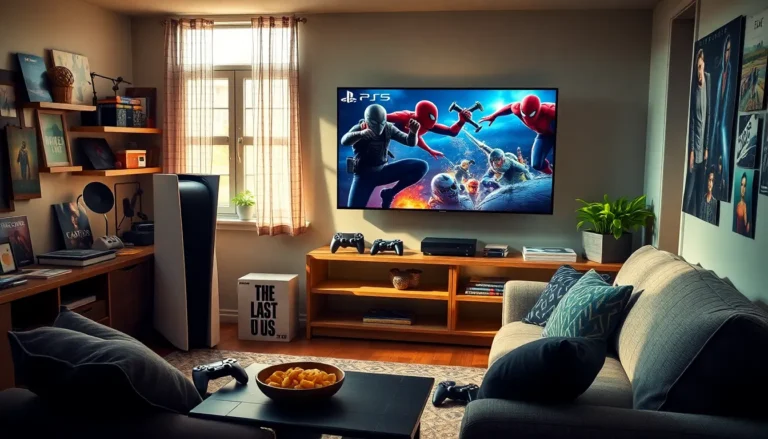Nintendo has become a household name, beloved by gamers across generations. From iconic characters to groundbreaking consoles, Nintendo has shaped the gaming landscape in profound ways. This article dives into the rich history of Nintendo, explores its impact on gaming innovation, and examines its enduring cult following, while also looking forward to future trends in the industry. Whether you’re a lifelong fan or a newcomer, understanding Nintendo’s journey provides a deep appreciation for what makes it truly special.
Table of Contents
ToggleThe History of Nintendo: A Gamer’s Perspective

Nintendo’s story began long before the advent of video games, dating back to 1889 when it was founded as a playing card company in Kyoto, Japan. Through the years, the company transformed its offerings, eventually entering the electronic entertainment business in the early 1970s.
Key Milestones in Nintendo’s Journey
- Color TV-Game (1977): Nintendo released its first home gaming console.
- Donkey Kong (1981): This arcade game introduced the beloved character Mario, paving the way for future franchises.
- Nintendo Entertainment System (NES, 1983): Regarded as the console that revived the gaming industry post-1983 crash, the NES brought games like “Super Mario Bros.” to the forefront.
- Game Boy (1989): Revolutionizing handheld gaming, the Game Boy brought gaming to a portable level, becoming immensely popular worldwide.
- Nintendo 64 (1996): The first console to feature 3D graphics, the N64 changed how games were designed and played.
- Wii (2006): With innovative motion controls, the Wii attracted a wider audience and redefined social gaming.
- Switch (2017): Combining home and handheld gaming, the Switch has become a massive success, showcasing Nintendo’s ability to adapt to changing gaming trends.
Impact of Nintendo’s Innovation on Gaming
Nintendo is often credited with pushing boundaries, shaping the industry with its innovative ideas. The company’s games have introduced unique gameplay mechanics that inspire both players and developers alike.
Iconic Nintendo Characters and Their Legacy
Characters like Mario, Zelda, and Donkey Kong are more than just game figures: they represent nostalgia and the core of gaming culture. Mario, for instance, has become a cultural icon, symbolizing the joy and creativity that video games can bring. These characters’ adventures capture the imagination of audiences, establishing a connection that lasts across generations.
The Evolution of Nintendo Consoles
Each console released by Nintendo has marked a significant shift in gaming technology. The NES established the home gaming format, while the Game Boy pioneered handheld gaming. Later, the Wii’s motion controls brought a new dimension to interactivity, allowing players to engage in ways previously thought impossible. Today, the Nintendo Switch continues this legacy by offering versatility, bridging consoles with its ability to switch between tablet and traditional gaming.
The Cult Following of Nintendo Games
Nintendo has cultivated a dedicated fanbase that transcends age, geography, and culture. The sense of community built around Nintendo’s franchises fosters fan engagement and loyalty.
The Role of Nostalgia in Nintendo’s Success
For many gamers, Nintendo represents a significant part of their childhood. Titles like “The Legend of Zelda” and “Super Mario” evoke fond memories, creating a sense of nostalgia that brings players back time and again. The company leverages this nostalgia by frequently re-releasing classic titles on modern consoles, allowing new generations to experience their iconic games while allowing longtime fans to relive their past.
Modern Trends and Future of Nintendo
As the gaming landscape evolves, so too does Nintendo’s approach to development and marketing. The rise of mobile gaming and digital platforms is reshaping how players engage with games.
Shifts in Gaming Culture
More than ever, gaming is about community. Switch games often include multiplayer options that encourage cooperative gameplay. This shift is reflected in Nintendo’s development focus, aiming to create games that promote social interaction. Also, with increasing emphasis placed on inclusivity and diverse narratives, Nintendo has begun to explore richer stories and more varied character representation in newer titles.
Nintendo’s Position in the Competitive Landscape
Nintendo stands uniquely in the gaming industry, partly due to its unwavering commitment to creativity and innovation. Competing consoles like PlayStation and Xbox emphasize graphics and processing power, whereas Nintendo often prioritizes gameplay mechanics and user experience. This divergence allows Nintendo to carve out a niche, attracting audiences looking for fun, engaging, and family-friendly experiences. Besides, compared to its competitors, Nintendo maintains its focus on intellectual property, continuously developing its rich library of characters and franchises.
Conclusion
Nintendo’s history is a testament to innovation, creativity, and the power of nostalgia. As gaming continues to evolve, Nintendo remains a pivotal player, adapting to new trends while retaining its core identity. With a strong focus on creating memorable characters and engaging gameplay, Nintendo not only preserves its legacy but sets the tone for the future of gaming, proving that playfulness and creativity will always have a place in our digital worlds.






